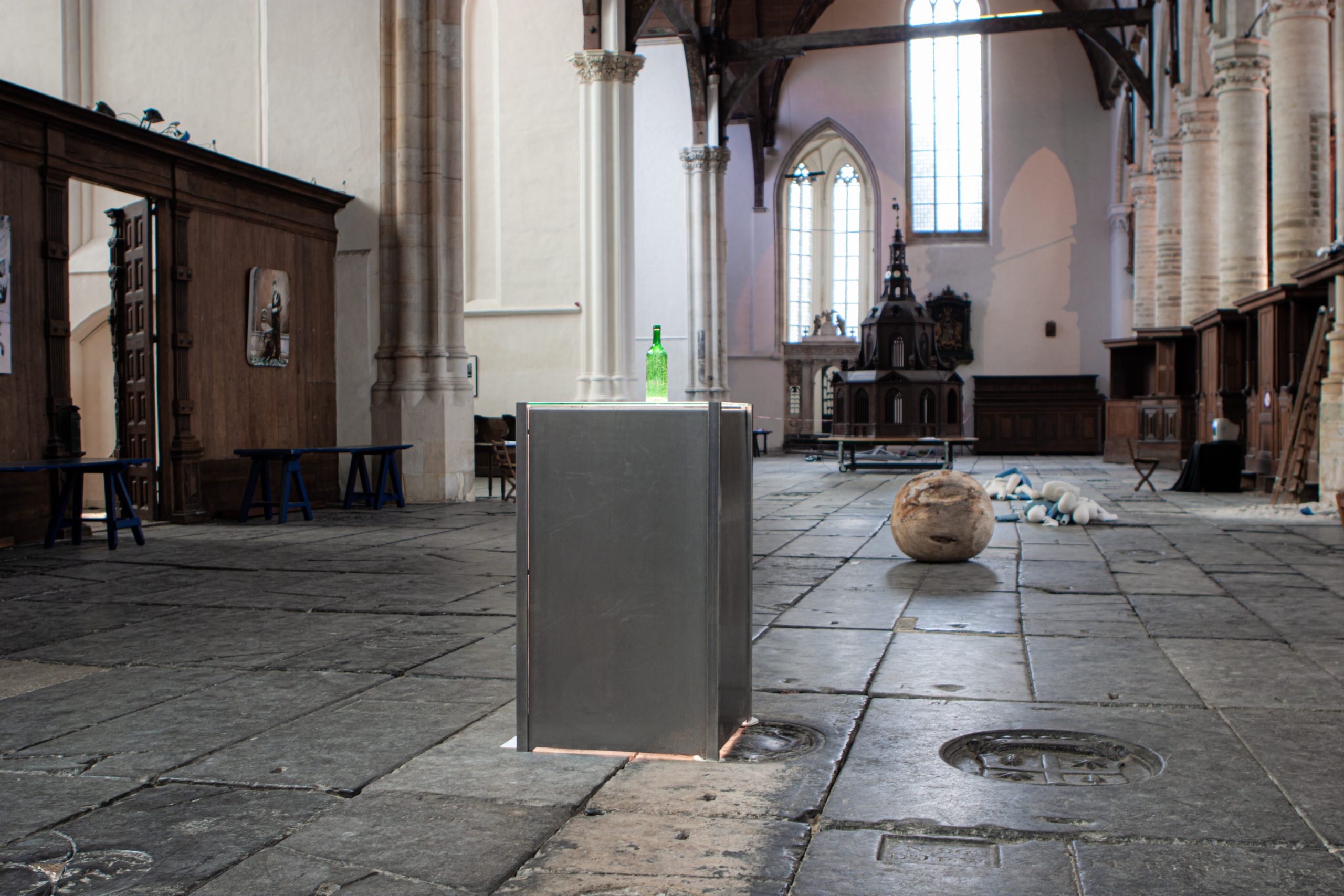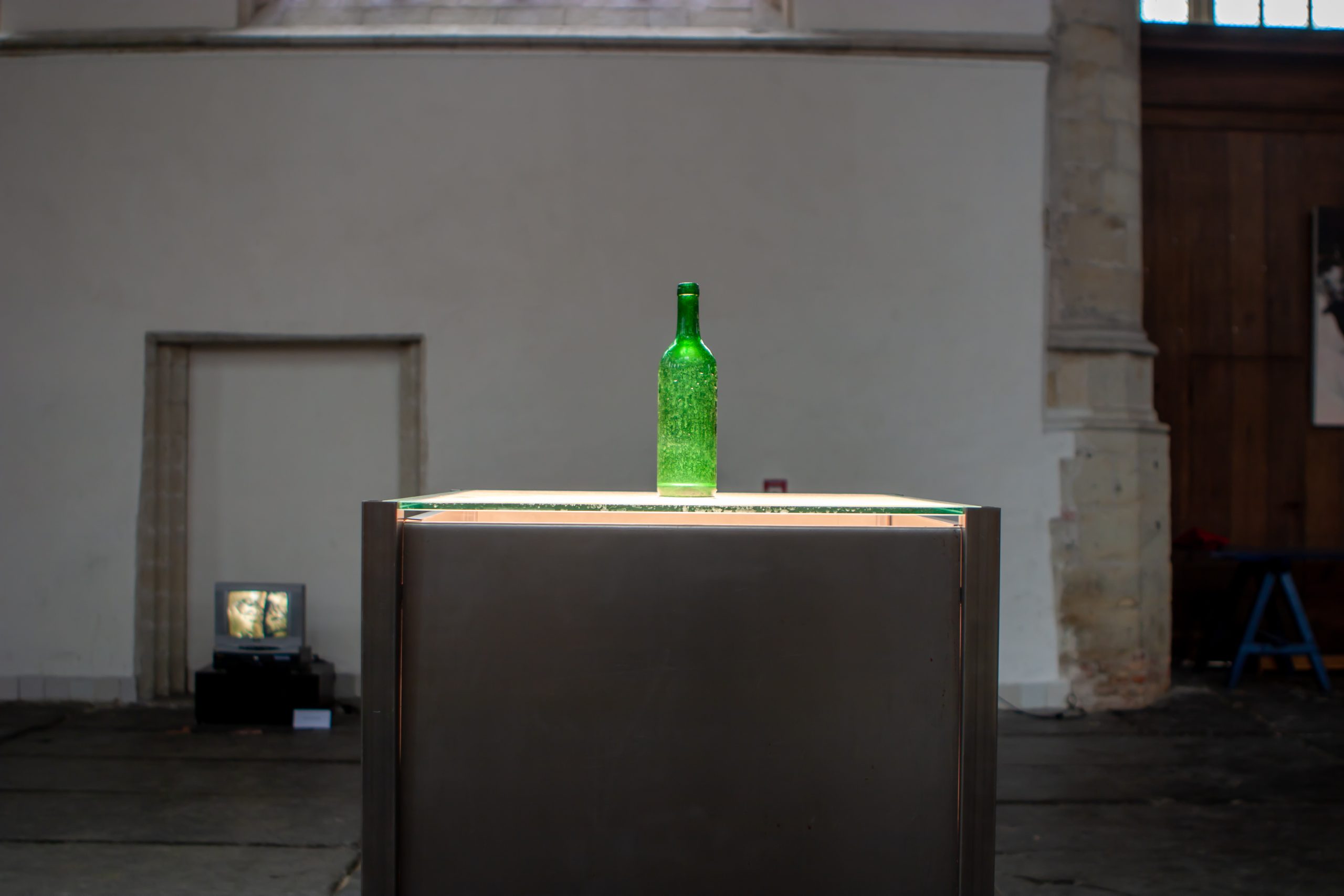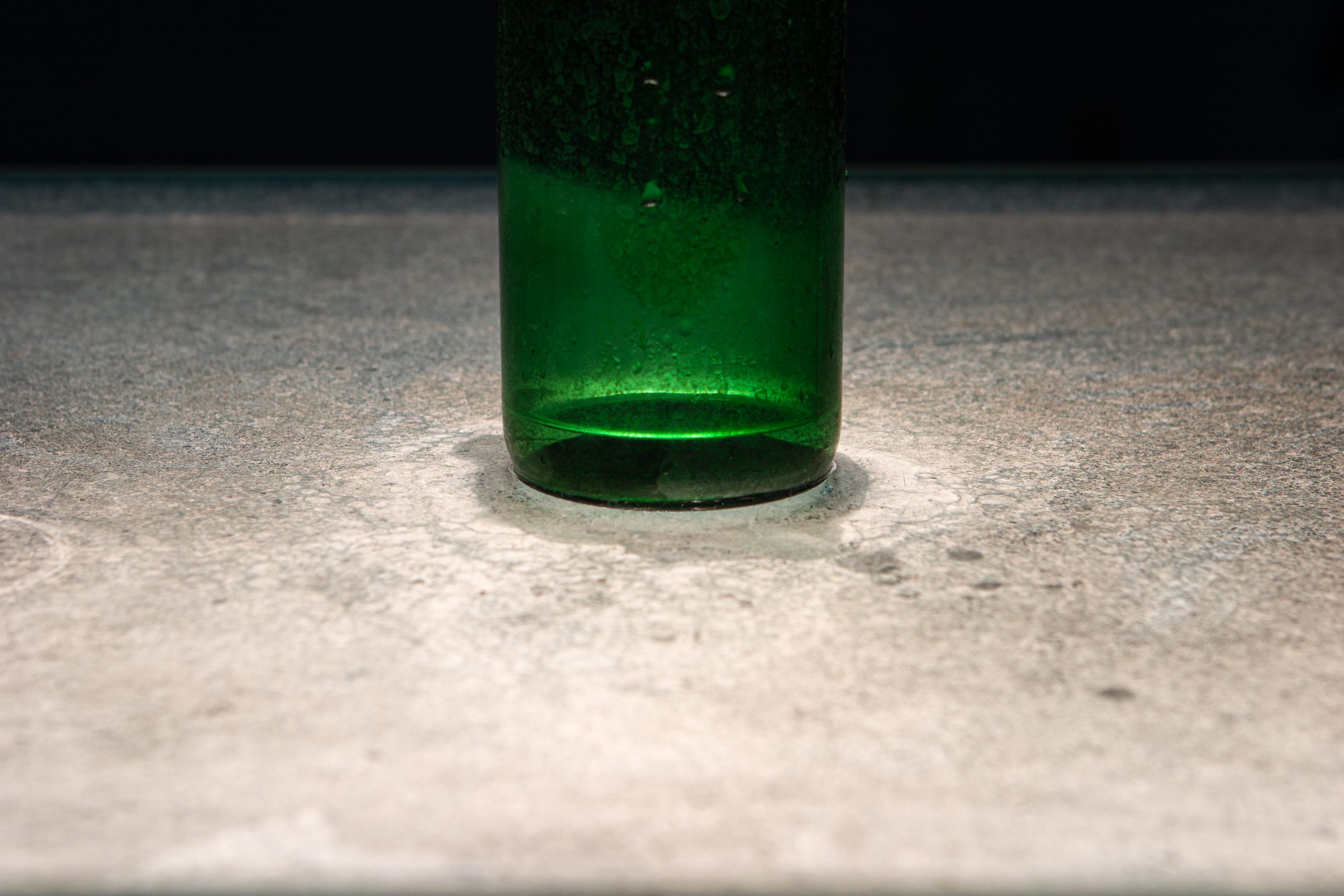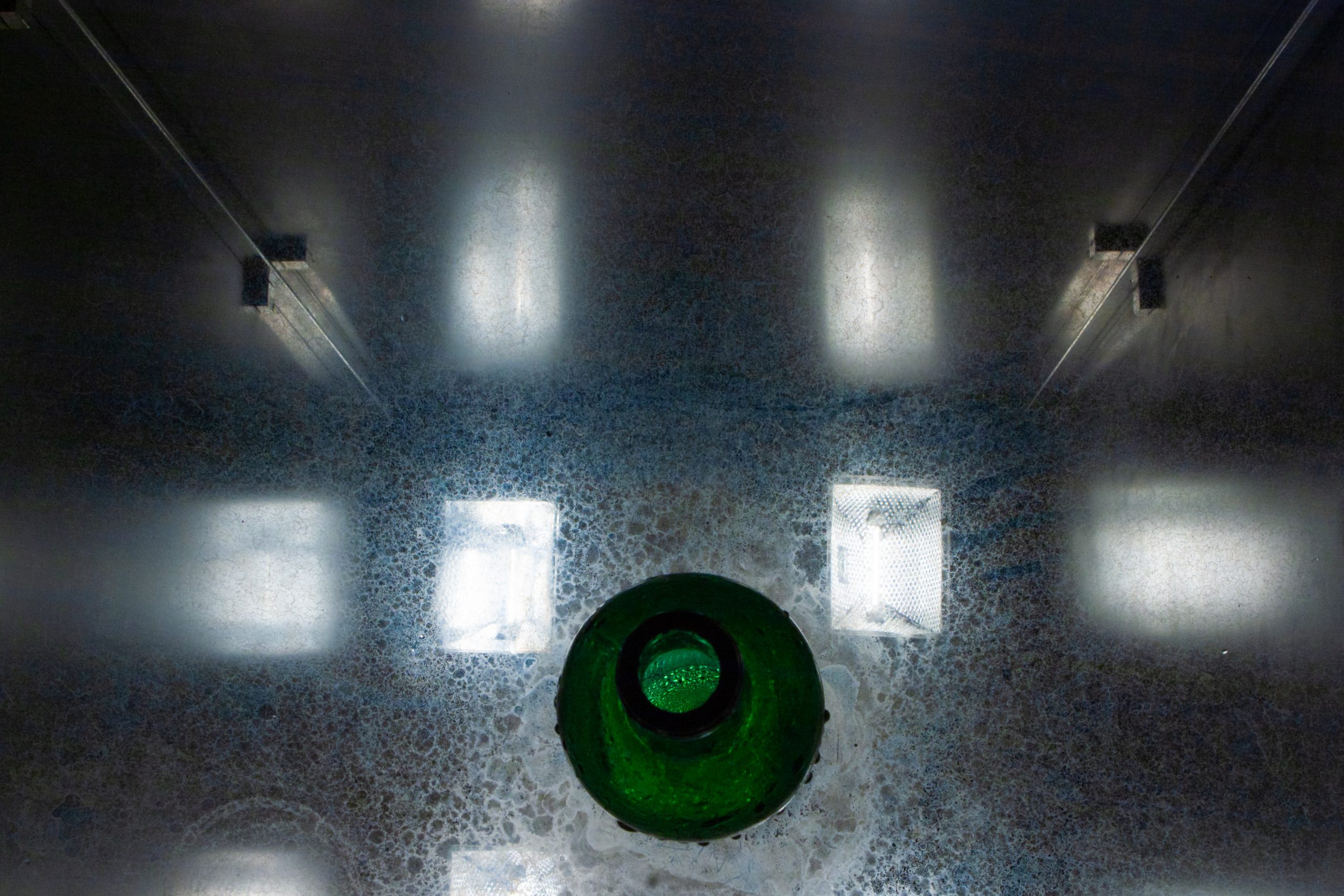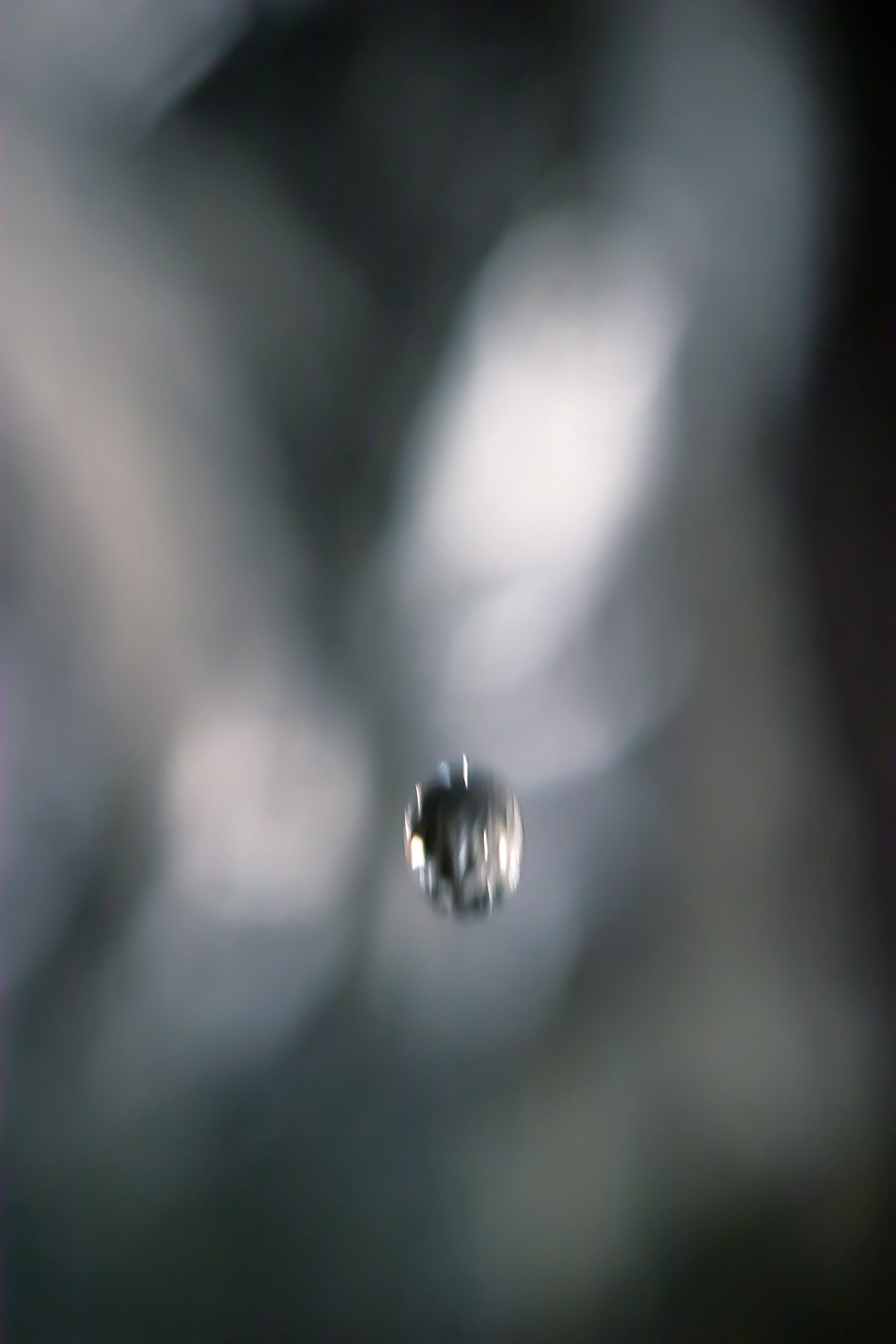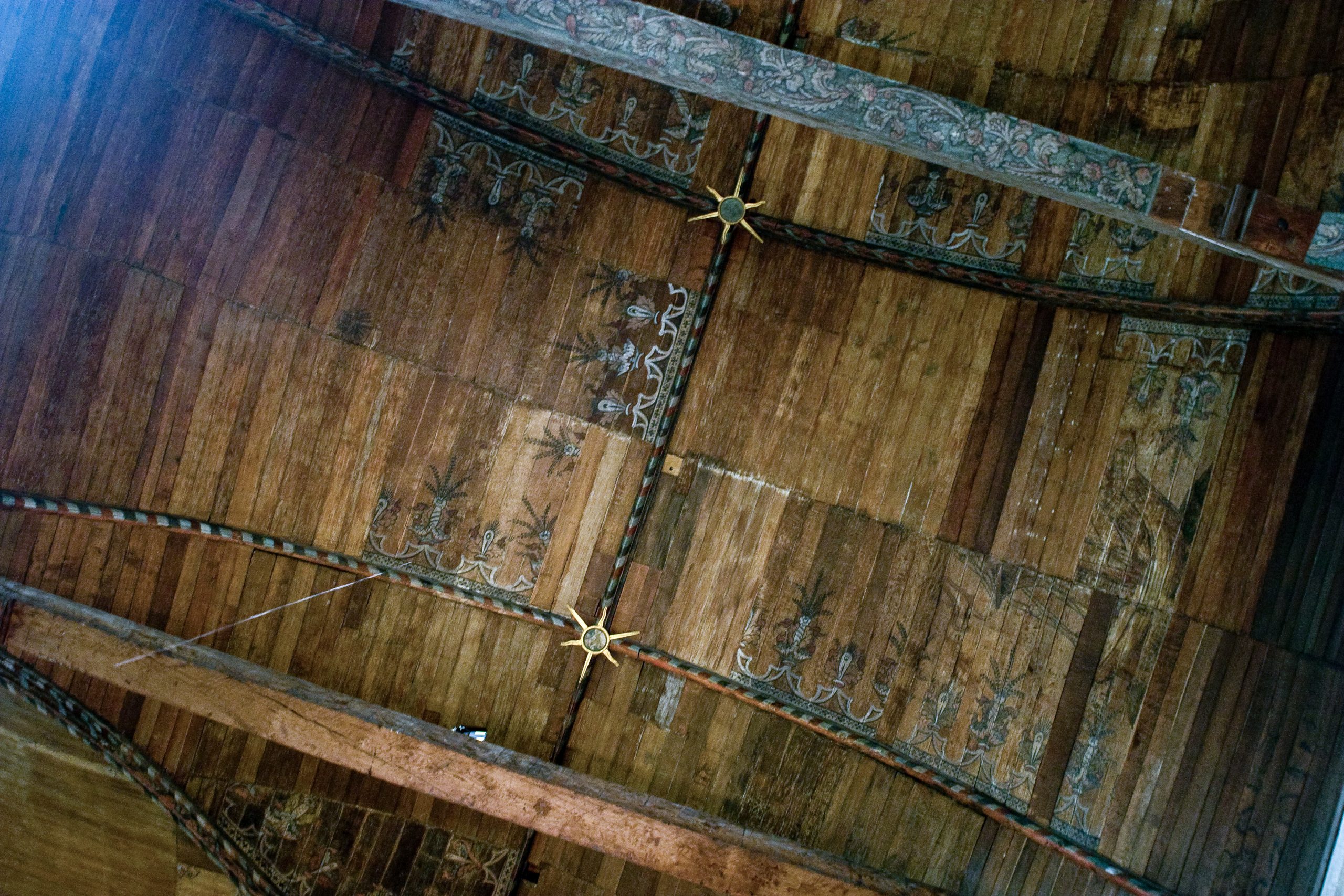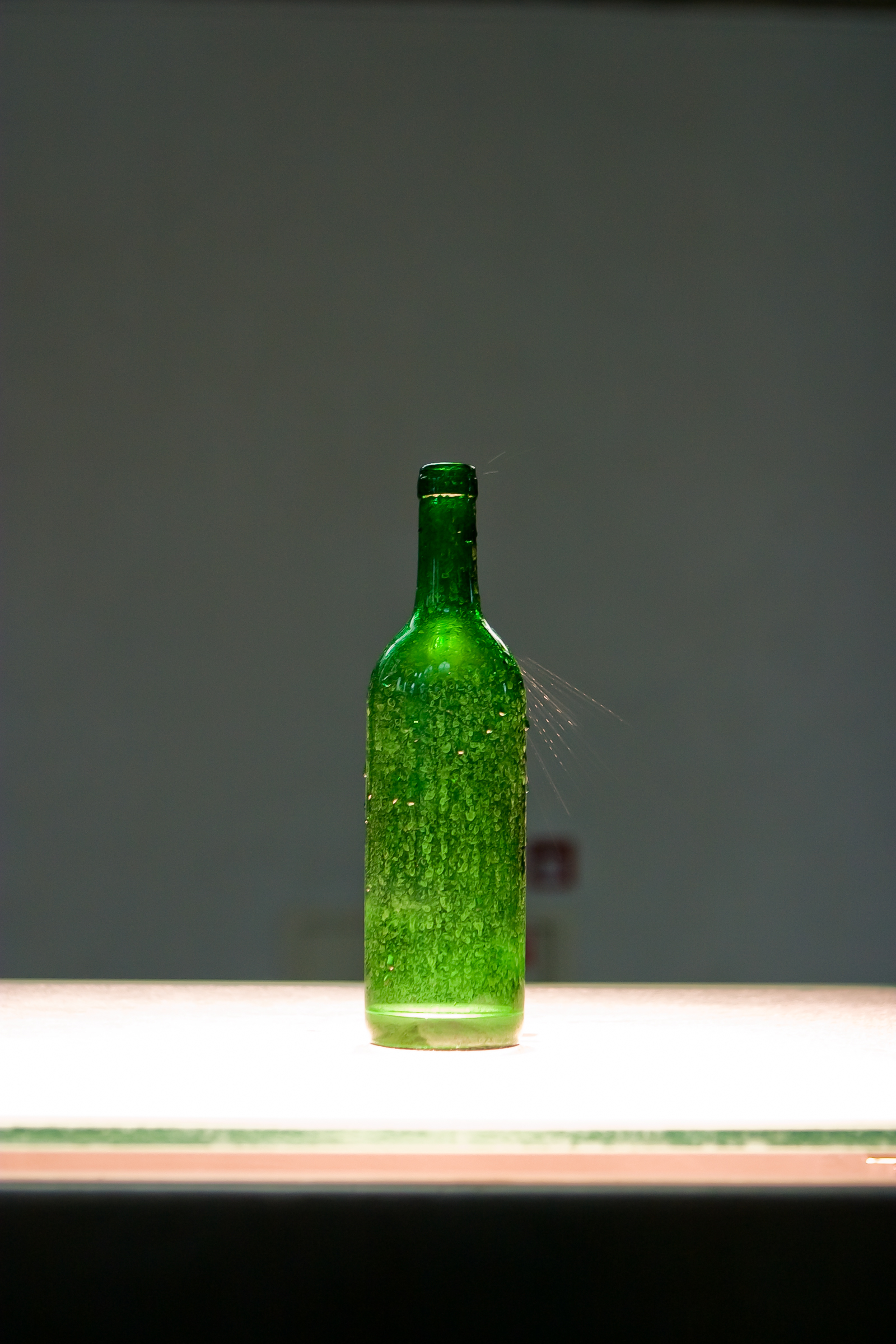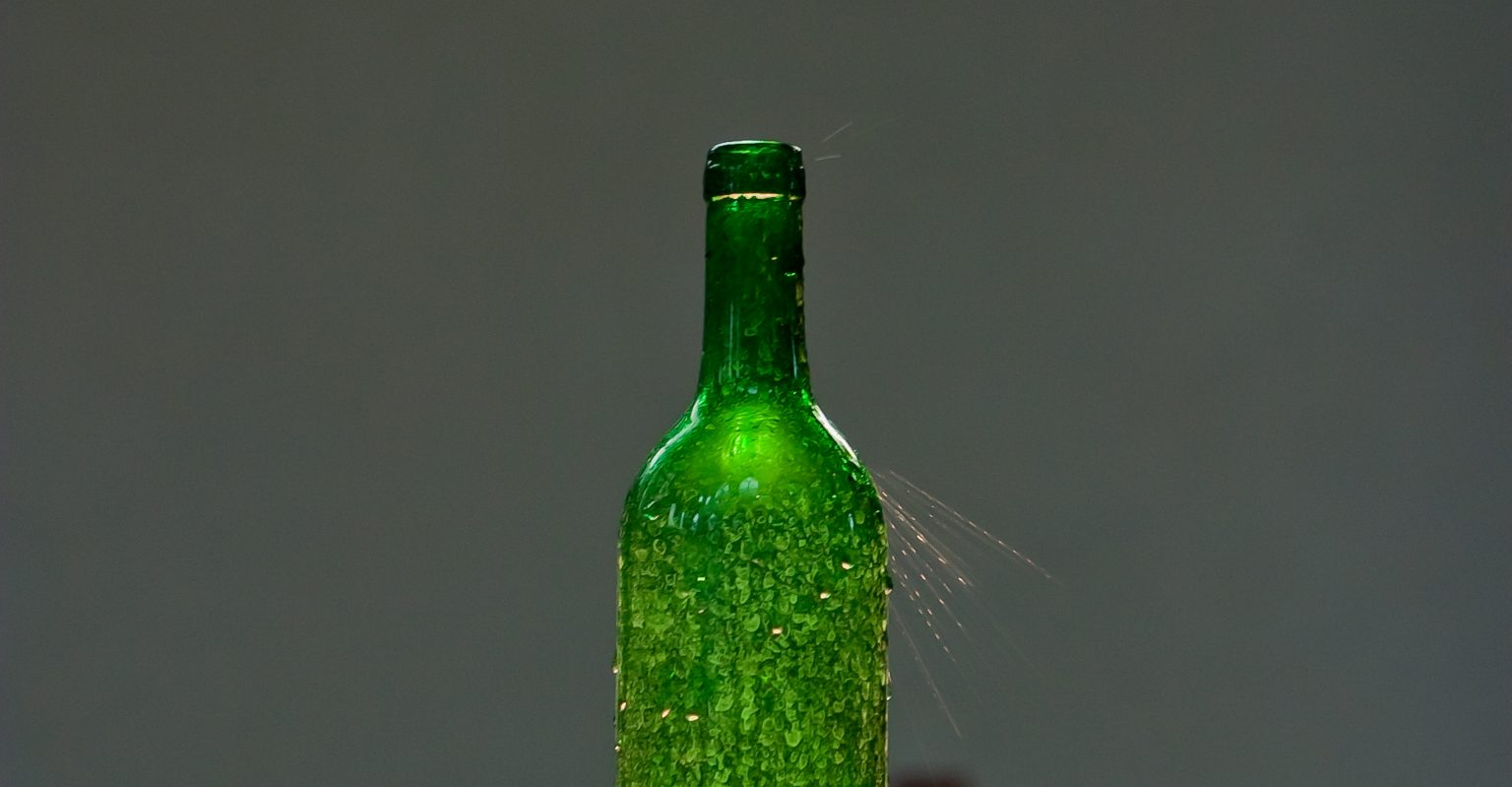
The Drop from Heaven
Sculpture / Glass / Lights / Magnets / Water / 1 x 1 x 20 m / 2008
According to Hal Foster and Rosalind Krauss, with minimalism, sculpture no longer stands apart, on a pedestal or as pure art, but is repositioned among everyday objects and redefined in terms of place. Furthermore, due to the natural opacity of the adopted readymade objects it would be difficult to read the sculptures illusionistically or see them alluding to an inner life of form.
This diffuse separation of a transcendental art space and the real is the subject for The Drop from Heaven, an installation made for the graduation exhibition in Amsterdam’s Old Church. Taken Umberto Boccioni’s Development of a Bottle in Space (1912) as a starting point and using Marcel Duchamp’s concept of the Readymades, The drop from heaven researches into the relation between space, time and illusionism.
A transparent wine bottle is placed on a pedestal. The bottle is empty at the start of the exhibition. The pedestal consists of metal plates on the sides with a transparent top of shaded glass. The construction is completely screwless with the plates being held together by strong Neodymium magnets.
In the pedestal are four 500 Watt construction lights illuminating the bottle from below and the space above the pedestal. As the construction lights are not immediately visible, visitors that try to take a peak at the inner workings of the pedestal are blinded by the power of the lights.
Furthermore, because of their power, the space above the installation, e.g. the antique ceiling of the church with faint decorations, can be examined clearly.
In the attic of the church, right above the bottle a container full of water is placed. This container drips 1 drop of water every few minutes, through a hole in the ceiling (‘stink gat’). The drop of water travels over 20 meters, and lands sometimes inside the bottle. The drops that fall outside of the bottle evaporate through the heat of the construction lights and form over time a white crystalline pattern on the surface of the glass plate.
As the dripping is not immediately obvious, visitors are in first instance not aware where the water inside the bottle originates from or what created the crystalline pattern. The dynamic perception of a more or less static sculptural object transforms upon seeing the lonely drop fall, and the waiting for the next drop commences.
